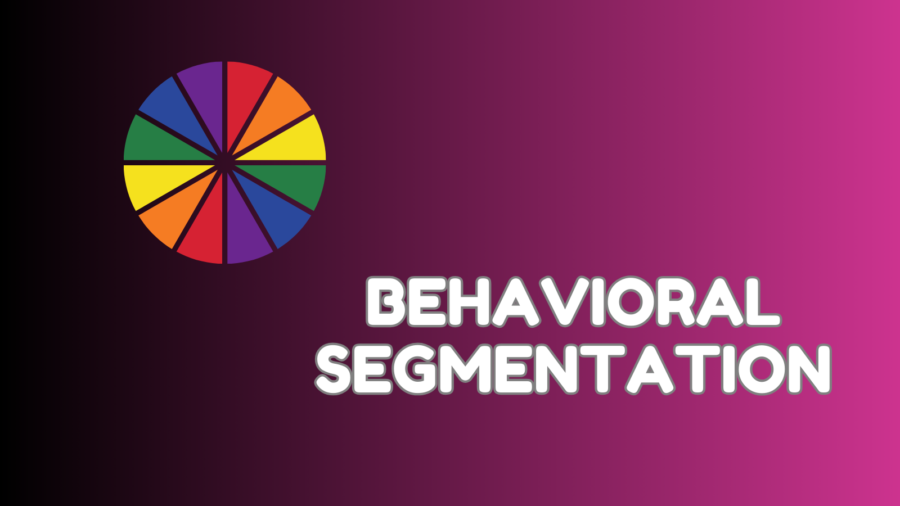Introduction
Understanding your customers is more critical than ever. With an inundation of choices and an increasingly discerning consumer base, the role of the product manager has transcended mere product development. It now entails a profound understanding of customer behavior and preferences to craft offerings seamlessly integrating into their lifestyles.
Product managers are the linchpins between customer expectations and product evolution. They are tasked not only with creating innovative products but also with refining existing ones to match the dynamic shifts in consumer behavior. In this complex ecosystem, traditional one-size-fits-all marketing strategies often fall short in capturing the nuanced intricacies of consumer actions. This is where the concept of behavioral segmentation assumes paramount importance.
Behavioral segmentation, a robust analytical framework, empowers product managers to dissect customer actions and decision-making processes. By categorizing customers based on their behavior patterns, preferences, and purchasing habits, product managers can create targeted strategies that resonate more deeply with specific customer segments. Through this nuanced approach, products can be tailored to address the unique needs and desires of different customer clusters.
In this article, we will delve into the intricacies of behavioral segmentation, exploring its underlying principles and methodologies. We will decipher how product managers can leverage this powerful tool to not only decipher customer preferences but also to predict future trends and proactively adapt product offerings. By mastering the art of behavioral segmentation, product managers can chart a transformative path toward enhanced customer satisfaction and sustainable product success in today’s fiercely competitive market.
What is Behavioral Segmentation?
Behavioral segmentation is a sophisticated marketing strategy that involves dividing a broad consumer market into smaller, more manageable segments based on behavior patterns, usage, and decision-making processes. Unlike traditional segmentation approaches that primarily rely on demographic or geographic data, behavioral segmentation delves deeper into understanding customer actions, preferences, and buying habits. By categorizing consumers based on their behavioral patterns, marketers can develop targeted strategies that effectively cater to the unique needs and preferences of distinct consumer groups.
This approach is particularly powerful as it enables businesses to tailor their products and services to specific consumer behaviors rather than assuming uniform preferences among all customers within a demographic group. Behavioral segmentation considers purchasing frequency, brand loyalty, spending patterns, and response to marketing stimuli. It helps businesses identify the specific triggers that prompt customers to make purchasing decisions and enables them to design customized marketing campaigns and product offerings that resonate more effectively with each segment.
By comprehensively analyzing behavioral data, businesses can gain valuable insights into consumer motivations, attitudes, and engagement levels. This, in turn, allows for the development of personalized marketing strategies that enhance customer engagement and foster long-term brand loyalty. Moreover, behavioral segmentation facilitates the identification of potential gaps in the market, allowing businesses to capitalize on unmet consumer needs and preferences and gain a competitive edge by offering tailored solutions that meet specific customer requirements.
To truly grasp the essence of behavioral segmentation, product managers must embark on a journey through the intricate web of customer actions and reactions. It involves delving into the following facets of consumer behavior:
- Purchase Behavior: This dimension provides a window into the consumer’s buying habits. It explores the frequency with which customers make purchases, the quantities they acquire, and the nature of these purchases—whether they are repeated transactions or sporadic, one-off acquisitions. By dissecting purchase behavior, product managers can gauge the depth of customer engagement and the potential for future interactions.
- Usage Patterns: The heart of a product’s success lies in how its users wield it. Behavioral segmentation unravels customers’ unique patterns when utilizing a product or service. It discerns whether they are devout, regular users, occasional dabblers, or dormant participants. Moreover, it sheds light on which product features command their attention and which languish in obscurity. Such insights provide a roadmap for product refinement and optimization.
- Loyalty and Churn: Customer retention is the lifeblood of any successful product, and behavioral segmentation offers a lifeline in this pursuit. It gauges customer loyalty by monitoring the frequency of their return visits and engagements with a product or service. Furthermore, it uncovers the underlying reasons behind customer churn—the disengagement or abandonment of a product. Armed with this knowledge, product managers can institute targeted interventions to enhance customer loyalty and mitigate churn, ultimately securing long-term sustainability.
- Product Feedback: The voice of the customer is a treasure trove of wisdom, and behavioral segmentation extends its reach to the realm of feedback and reviews. By diligently collecting and analyzing customer comments and evaluations, product managers can glean valuable insights into the nuances of customer satisfaction and dissatisfaction. These insights serve as a compass, guiding product enhancements and improvements that align precisely with customer expectations.
In essence, behavioral segmentation acts as a magnifying glass, allowing product managers to zoom in on the subtleties of customer behavior. It equips them with the knowledge required to tailor their product strategies, marketing campaigns, and user experiences with surgical precision. As product managers navigate the dynamic landscape of consumer preferences and expectations, behavioral segmentation emerges as a powerful compass, steering their efforts toward customer-centricity and success.
Why is Behavioral Segmentation Important for Product Managers?
- Personalization: Behavioral segmentation enables product managers to personalize the user experience. By understanding how different customer segments use their product, they can tailor marketing messages, product features, and recommendations to meet specific customer needs.
- Effective Marketing: When product managers know their customers’ behavior, they can create targeted marketing campaigns that resonate with each segment. This leads to higher engagement and conversion rates, ultimately driving revenue growth.
- Product Improvement: Analyzing behavioral data helps identify pain points and areas for improvement. Product managers can prioritize updates and enhancements based on user behavior, ensuring that the most critical issues are addressed.
- Customer Retention: Understanding why customers churn and addressing those issues can significantly improve customer retention rates. Behavioral segmentation helps pinpoint the root causes of churn, allowing product managers to take corrective action.
- Resource Allocation: Limited resources require product managers to decide where to invest time and money. Behavioral segmentation helps identify the most promising customer segments, guiding resource allocation for maximum impact.
How to Implement Behavioral Segmentation
Implementing behavioral segmentation effectively requires a structured approach:
- Collect Data: Start by gathering relevant data on customer behavior. This includes user interaction logs, purchase history, customer feedback, and any other data sources that provide insights into customer actions.
- Define Segments: Create customer segments that reflect different behavioral patterns based on the collected data. For example, you might have segments like “Frequent Shoppers,” “Feature Power Users,” or “Inactive Customers.”
- Analyze Behavior: Dive deep into each segment to understand their behaviors and preferences. Look for patterns, trends, and anomalies that can inform product decisions.
- Personalize Marketing: Tailor your marketing efforts to each segment. Craft messages and promotions that resonate with each group’s specific behaviors and needs.
- Iterate and Improve: Continuously monitor and refine your segments as customer behavior evolves. Be prepared to adjust your product and marketing strategies accordingly.
Conclusion
Behavioral segmentation is a cornerstone in the ever-evolving arsenal of tools available to product managers. With its profound insights into the intricate nuances of customer behavior, this approach serves as a guiding light in the journey toward creating products that meet and exceed customer expectations. By closely examining customer behavior and preferences, product managers can strategically align product development with the ever-shifting landscape of consumer demands, fostering a dynamic environment where innovation and customer satisfaction intertwine.
The essence of behavioral segmentation transcends mere product development—it permeates into the realm of user experiences, cultivating a deeper understanding of how consumers interact with products and services. By leveraging behavioral data to tailor product features and interfaces to match specific user preferences, product managers can engineer seamless experiences that resonate personally, fostering enduring brand loyalty and customer advocacy.
In the fiercely competitive marketplace of today, where customer loyalty is often fickle, the ability to connect with customers on a behavioral level becomes the linchpin in the quest for sustained business growth. With behavioral segmentation as a guiding compass, product managers can navigate the intricate landscape of consumer preferences and purchase motivations, positioning their offerings as the epitome of customer-centric innovation. Through the lens of behavioral segmentation, businesses can not only adapt to current consumer demands but also anticipate and shape future trends, paving the way for a proactive approach to product development that stays ahead of the curve.
In essence, embracing behavioral segmentation is not just a tactical decision; it embodies a strategic paradigm shift that underscores the paramount importance of customer-centricity in modern product management. By integrating this powerful tool into their repertoire, product managers can unlock the true potential of their products, cultivating a customer base that is not just satisfied but deeply engaged—an indispensable asset in a competitive landscape where customer loyalty can make all the difference between market leadership and obscurity.





